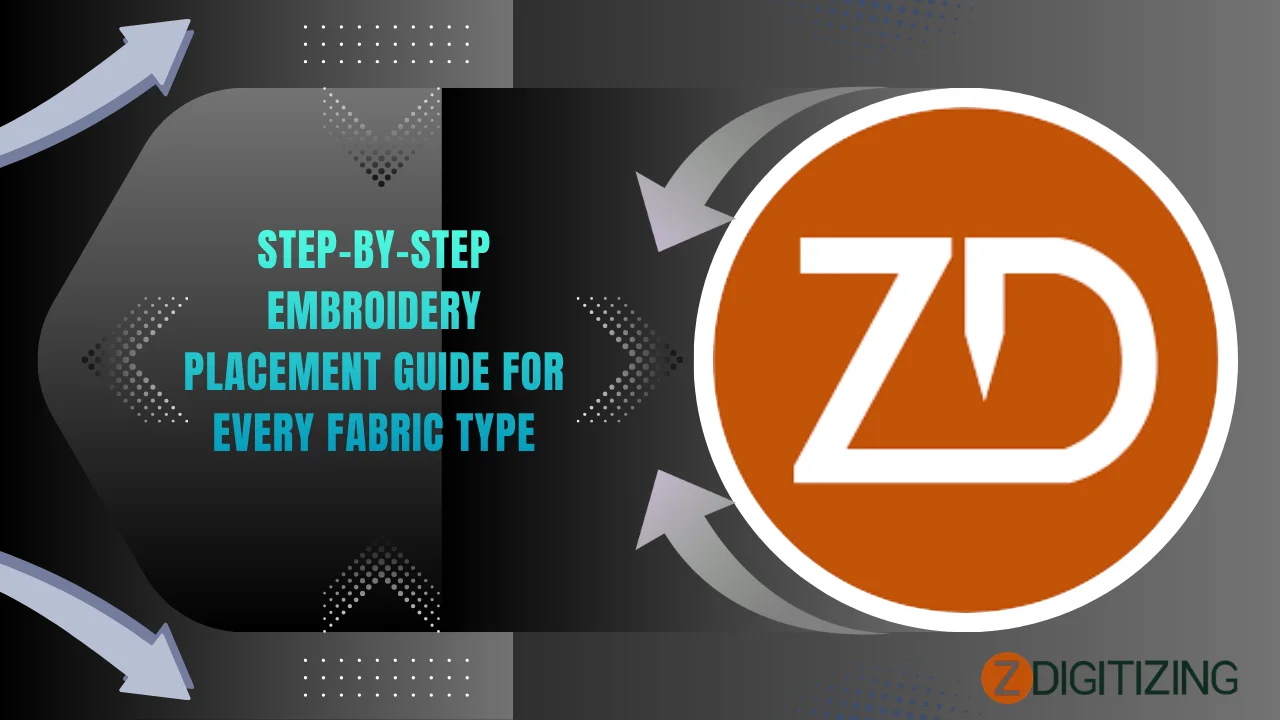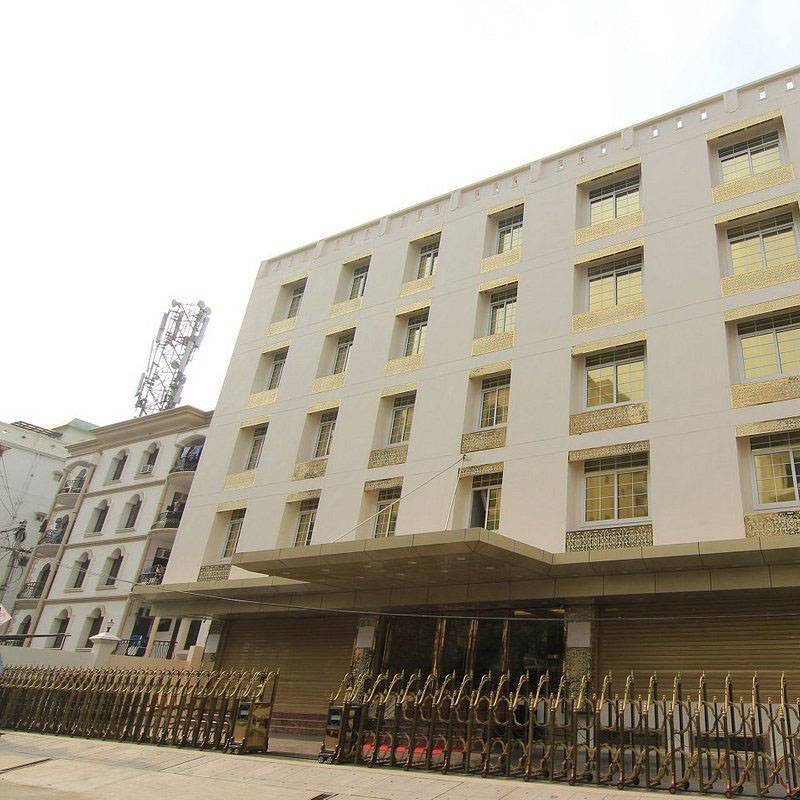Embroidery converts standard apparel into personalized works, but professional quality depends on one critical factor: precise placement. The right embroidery placement ensures your monograms, logos, or motifs are optimally positioned—whether centered on a shirt pocket, aligned on a sleeve, or balanced on a cap—while expertly compensating for fabric properties. Whether you use a hobbyist Brother machine or operate a commercial Tajima multi-head system, inaccurate placement leads to common issues like puckering, distortion, or poor visual appeal.
This comprehensive embroidery placement guide, compiled from industry standards, provides fabric-specific procedures, measurements, required tools, and expert tips for reliable positioning every time. We detail 10 common apparel materials, from cotton tees to rugged leather jackets, including best-practice hooping methods, stabilizer recommendations, and test-stitching protocols. Follow this guide to stitch with absolute confidence and improve your embroidery craft.
Why Accurate Embroidery Placement is Essential
Misplaced embroidery is not merely visually awkward—it represents a failure in the production process. On flexible fabrics, poor hooping causes significant shifting; on dense materials, incorrect depth can result in unnecessary needle breakage. Following a specific placement procedure prevents:
-
Visual Disproportion: A logo positioned too high on a polo shirt signals inexperienced work.
-
Material Damage: Puckering on delicate knits or creating holes in thin materials.
-
Production Loss: Re-stitching requires additional time, materials, and labor.
-
Client Dissatisfaction: Professional service requires guaranteed precision.
Standard measurements (such as 4 inches down from the collar for left chest) function as reliable starting points. Always adjust these based on the garment's specific size, the scale of the design, and the material's stretch characteristics. Always mark the placement using water-soluble pens, utilize templates, and verify the design on scrap material first. Professional tools, including laser alignment systems or dedicated grid hoops, simplify achieving maximum precision.
Essential Tools for Professional Placement Accuracy
Before starting any embroidery project, gather these necessary placement resources:
-
Hooping Aids: Use specialized tools like magnetic hoops, snap hoops, or specific grid templates for consistent tension and alignment.
-
Marking Tools: Water-soluble pens, tailor's chalk, or heat-erasable markers for temporary guides.
-
Measurement Guides: Clear acrylic rulers, self-adhesive placement stickers, or printable design templates from software like Embrilliance.
-
Stabilizers: Select tear-away, cut-away, or water-soluble backings; the choice must be matched directly to the fabric type.
-
Software Utility: Use programs like Wilcom TrueSizer to accurately scale and digitally preview the design placement before stitching.
-
Alignment Systems: Utilize built-in laser or LED guides on commercial machines for real-time positioning feedback.
Expert Practice: Construct a dedicated placement template. Hoop a piece of scrap stabilizer, stitch a measurement grid onto it, and reuse this tool for consistent positioning across large batches.
Fabric-Specific Placement Procedures
Fabric #1: Standard Cotton T-Shirts
Cotton is generally forgiving but prone to shrinking; pre-washing is strongly recommended.
| Placement Area | Standard Measurement (Adult) |
| Left Chest | 7–9" down from shoulder seam, 4" from center. (Reduce by 1" for youth sizes.) |
| Full Front | Center the design 3–4" below the collar edge. |
| Sleeve | 1" below the armhole seam, centered. |
Procedure: Pre-wash and iron flat. Mark the center line by folding the shirt vertically. Hoop the cut-away stabilizer and the garment tautly, ensuring the fabric grain is straight. Align the design using hoop grid marks. Stitch at a moderate speed (600 SPM) and check density on a test swatch. Stabilizer: Cut-away for lasting durability. Common Concern: Shrinkage—allow a 0.5-inch buffer.
Fabric #2: Polo Shirts (Collar & Placket)
Polos require measurement from seams and the placket edge, not the garment edge.
Procedure: Fasten the placket buttons and steam the shirt flat. Mark the placement using a T-square ruler, measuring from the placket edge. Use a snap hoop with tear-away stabilizer, ensuring the collar area is not stretched during hooping. Use a laser or template to account for the placket offset. Stitch satin logo elements carefully, reducing speed near seams. Stabilizer: Tear-away with a topping if the fabric has a pile.
Fabric #3: Hoodies & Sweatshirts (Thick Fleece)
Thick fleece materials can easily pucker; stabilization must be aggressive.
Procedure: Turn the garment inside-out and steam the seams flat. Mark the placement using a ruler across the shoulders. Use double cut-away stabilizer and hoop the garment inside-out to prevent crushing the fabric pile. Magnetic hoops aid in managing thickness. Stitch using low density settings (e.g., 0.5mm) and a flash technique between layers if necessary. Issue Focus: Pile crush—address this by using a topping film.
Fabric #4: Denim Jackets (Rigidity)
Denim is stiff; hoop very tightly and always avoid major seams.
Procedure: Pre-wash the denim to soften the material. Mark placement using tailor's chalk to prevent ink bleed. Use a clamp hoop or adhesive stabilizer, particularly for pocket areas. Use an LED guide for alignment and verify proper needle penetration depth. Stitch with a size #14 needle at a slow speed (500 SPM). Stabilizer: Cut-away, secured with a light spray adhesive.
Fabric #5: Knit Activewear (High Stretch)
Fabric stretch causes design shifting; stabilization and floating techniques are necessary.
Procedure: Steam the material lightly, avoiding any excessive stretching. Mark using a ruler designed for flexible materials. Float the fabric over the cut-away stabilizer and pin the edges securely. Align the design, reducing its overall dimensions by 10% to account for fabric stretch after stitching. Use a ballpoint needle and low thread tension. Stabilizer: Cut-away combined with a water-soluble topping.
Fabric #6: Silk & Satin (Fragile Materials)
Light, fine fabrics tear easily; apply minimal tension during hooping.
Procedure: Iron the fabric using a protective press cloth. Mark the placement with faint chalk or using small pins. Create a stabilizer sandwich using double water-soluble stabilizer. Apply gentle tension and use the smallest appropriate hoop. Stitch with a size #9 needle at a very low speed (400 SPM). Expert Practice: Reduce the design density by 20% for these materials.
Fabric #7: Leather & Vinyl (Permanent Holes)
These materials do not stretch, and needle holes are permanent marks.
Procedure: Clean the surface; do not pre-wash. Use masking tape as a temporary guide for marking. Use adhesive stabilizer and float the leather material on top. Use a Teflon presser foot to prevent material sticking. Stitch with a dedicated leather needle and avoid using backstitching. Stabilizer: Tear-away adhesive backing. Concern: Skipped stitches—maintain a slow machine speed.
Fabric #8: Towels & Terry Cloth (High Pile)
High fabric pile always shifts; a topping material is mandatory.
Procedure: Steam the towel flat. Mark with a water-soluble pen. Hoop cut-away stabilizer paired with a water-soluble topping. Press the pile down firmly before stitching. Use dense satin stitches for borders and motifs. Stabilizer: Cut-away and topping. Tip: Slightly increase the stitch length for a softer, plush appearance.
Fabric #9: Hats & Caps (Curved Surfaces)
Curvature naturally distorts designs; use specialized cap frames.
Standard Placement (Front): Center the design 2.5" above the brim edge.
Procedure: Stretch the cap securely onto a dedicated cap frame (270°). Mark the center using a cap gauge tool. Use a laser guide to adjust for the curved surface. Reduce the design height by 20% to compensate for the curve. Stabilizer: Cut-away backing. Issue: Brim interference—ensure the hoop is positioned lower to clear the brim.
Fabric #10: Bags & Totes (Structural Challenges)
Handles and stiff seams complicate the hooping process.
Procedure: Stuff the bag with tissue paper or foam to flatten the embroidery area. Mark the placement using a template, avoiding areas near handles. Use a magnetic or clamp hoop to secure the thick layers. Always avoid stitching over seams. Use a size #11 needle. Stabilizer: Tear-away.
Universal Professional Placement Techniques
-
Scale by Garment Size: Use standard measurements for Adult M-XL. Reduce all measurements by 0.5" for size S; increase by 1" for size XXL.
-
Always Test: Stitch the design on an identical piece of scrap material using the same stabilizer and thread.
-
Digital Proofing: Utilize software to digitally mock up and confirm the placement before production begins.
-
Batch Consistency: Label and number garments, using the identical hoop positioning for uniform quality across the entire production run.
-
Laser Alignment: Invest in precise add-on laser guides for professional-level machines.
Document all embroidery placement measurements and settings per client for effortless and accurate repeat orders.
Conclusion
Mastering the embroidery placement guide for every fabric type—from standard cotton tees to resilient leather jackets—improves your work from basic to professional standard. This ensures all designs are positioned accurately, distortion-free, and client-approved. By utilizing these fabric-specific steps, selecting the correct tools, and testing designs rigorously, you will achieve consistent, exceptional results that perform well through wear and wash cycles. Precision placement is your key technical advantage.
Frequently Asked Questions (FAQs)
Q: Where is the standard embroidery placement on a left chest?
A: Position the design 7–9 inches down from the shoulder seam and 4 inches from the center placket. Always adjust this measurement to suit the garment size and the fabric's flexibility.
Q: What stabilizer is most effective for knit and high-stretch fabrics?
A: A cut-away stabilizer paired with a water-soluble topping is recommended. This combination prevents puckering of the knit material and stops the fabric from shifting during stitching.
Q: How is embroidery centered on a hoodie pocket?
A: First, measure the specific pocket dimensions and mark the exact center point. Hoop the area using cut-away stabilizer, and use a specialized placement template or ruler to ensure alignment.
Q: Can I embroider on leather without causing permanent damage?
A: Yes. Use adhesive tear-away stabilizer, float the material on the hoop, utilize a dedicated leather needle, and set the machine speed low to minimize the risk of permanent, visible holes.
Q: What is the typical placement for hat embroidery?
A: The standard placement is centered 2.5 inches above the edge of the brim using a 270° cap frame. It is essential to reduce the design height by 20% to account for the cap's curvature.
Q: What method prevents puckering when stitching on silk?
A: Use a double layer of water-soluble stabilizer, a size #9 needle, very low thread tension, and a slow speed (e.g., 400 SPM). Always test the specific design density on a silk scrap first.







